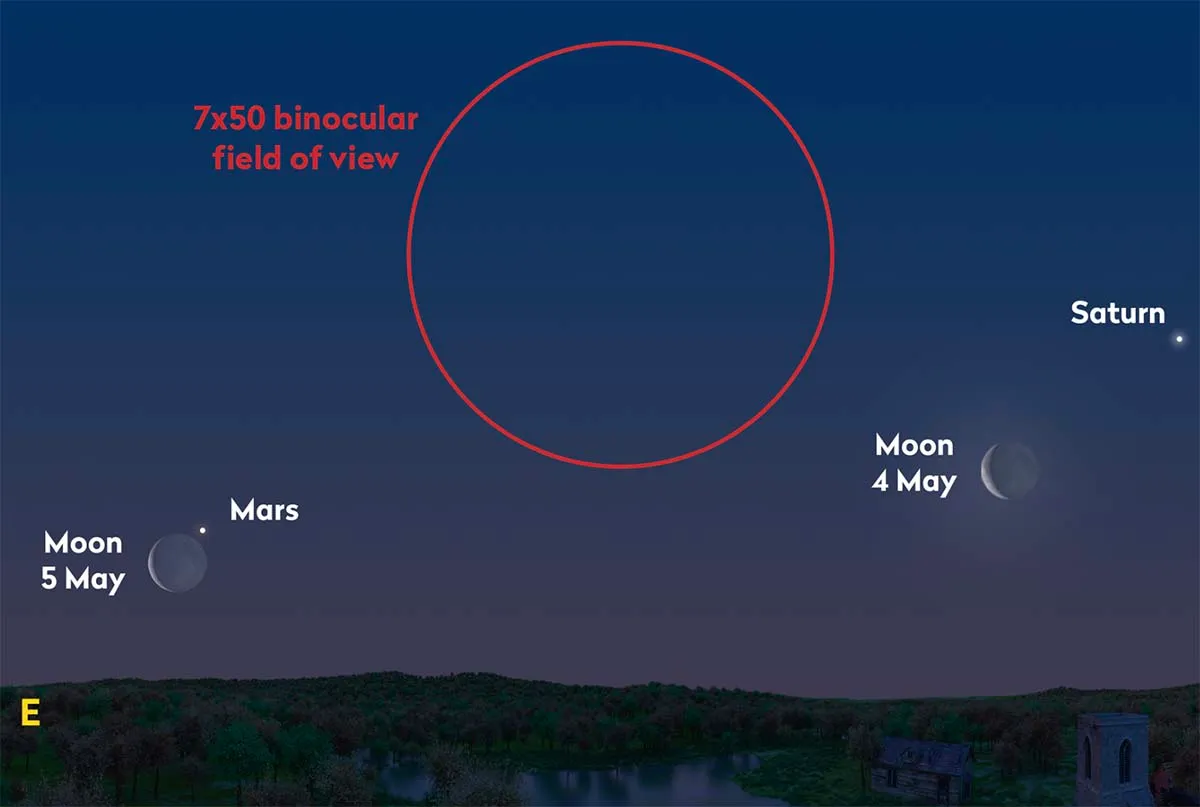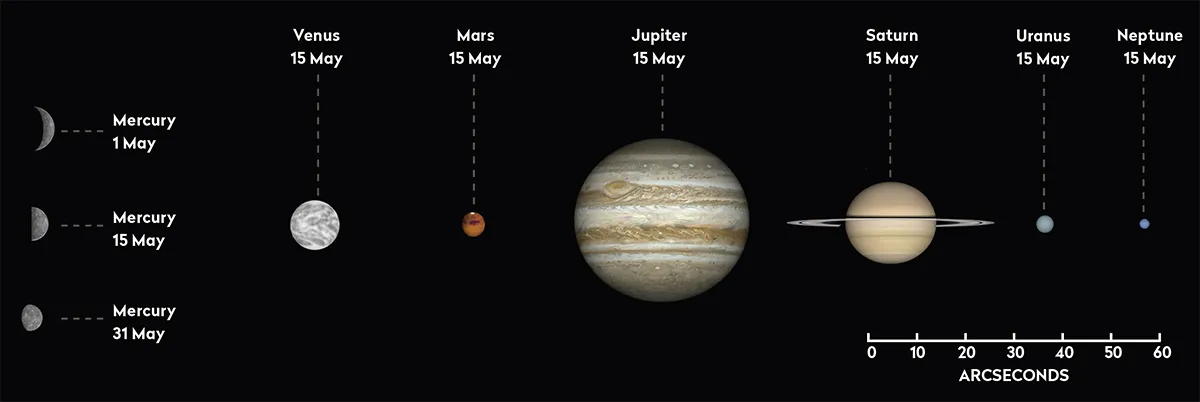Planetary observers and imagers haven't had much to shout about in 2024, but that's about to change in the latter half of the year.
In the meantime, what can we expect from the Solar System planets in May 2024?
The poor showing of planets during May gives Saturn the best position and Mars the second best – but don’t get your hopes up!
Saturn is a morning planet in eastern Aquarius, and at the start of the month will be battling the dawn twilight.
The ringed planet’s position will improve slightly as the month goes on but, apart from a meeting with a thin crescent Moon on the morning of 4 May, Saturn's really only the best planet to see this month by default.
Find out more in our guide to observing Saturn in May 2024.

See if you can spot this nice conjunction, and catch Saturn marginally improving as May ends.
In the latter half of 2024, the planets will begin to improve considerably as we head into autumn and darker evenings.
In 2024, Saturn reaches opposition on 8 September and Jupiter reaches opposition on 7 December.
Mars next reaches opposition on 16 January 2025.
For more stargazing advice, sign up to receive the BBC Sky at Night Magazine e-newsletter and listen to our weekly Star Diary podcast.
Planets in May 2024

Saturn
- Best time to see: 31 May, 04:00 BST (03:00 UT)
- Altitude: 12°
- Location: Aquarius
- Direction: Southeast
- Features: Rings, subtle atmospheric banding, brighter moons
- Recommended equipment: 75mm or larger telescope
Mercury
Mercury is at mag. +1.2 on 1 May, but only rises half an hour before the Sun, so it’s not particularly well positioned for viewing from the UK. A 5%-lit waning crescent Moon sits just 2.5° from mag. +0.8 Mercury on 6 May, again poorly placed before sunrise.
On 9 May, the planet reaches greatest western elongation, 26.4° from the Sun, where it will be shining at mag. +0.6. Unfortunately, not much improvement occurs throughout the rest of May, Mercury rising just 35 minutes before the Sun on 31 May, when it shines at a decent magnitude of –0.7.
Venus
Venus is currently a morning object, but is positioned too close to the Sun to be observed safely.
Mars
- Best time to see: 31 May, 03:00 UT
- Altitude: 6° (low)
- Location: Pisces
- Direction: East
You may just catch a glimpse of mag. +1.1 Mars in the morning sky at the start of May, the planet rising one hour before the Sun on this date. The problem is, this doesn’t give it much opportunity to gain altitude before the dawn twilight gets too bright to see it.
You might have a better chance of seeing something on the morning of 4 May, when Mars is accompanied by a 20%-lit waning crescent Moon. Both objects will have risen above the horizon by 04:40 BST (03:40 UT), the Moon appearing 13° west (right from the UK) of Mars. A closer meeting occurs on the following morning, 5 May, the Moon now at 12% illumination.
By the end of the month, having brightened by a narrow amount to now shine at mag. +1.0, Mars rises 100 minutes before the Sun. Your best bet for finding it will be to use binoculars around 04:00 BST (03:00 UT) when Mars can be found 6° above the eastern horizon.
Jupiter
Jupiter reaches superior conjunction with the Sun on 18 May and cannot be seen properly this month. It’s worth noting that mag. –3.8 Venus will lie 11 arcminutes from mag. –1.8 Jupiter at 10:00 BST (09:00 UT) on 23 May, but with both planets barely more than 3° from the Sun, this conjunction isn’t really a viable option for safe observation.
Returning to the morning sky after solar conjunction, Jupiter rises a paltry 20 minutes before the Sun on 31 May.
Uranus
Uranus is lost in the evening twilight at the start of May and in conjunction with the Sun on 13 May, rendering it not visible this month.
Neptune
Morning planet Neptune isn’t visible as it’s currently lost in the dawn twilight.
This guide to the planets appeared in the May 2024 issue of BBC Sky at Night Magazine
